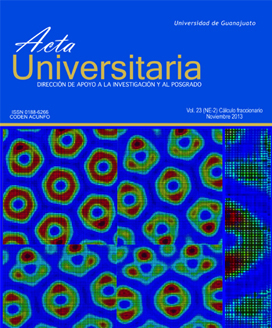Published 2013-12-01
Keywords
- Rogue wave,
- fiber laser,
- noise,
- multistable.
- Ondas gigantes,
- fibra láser,
- ruido,
- multiestable.
How to Cite
Abstract
Clear evidence of rogue waves in a multistable system is revealed with an erbium-doped fiber laser driven by harmonic pump modulation (Pisarchik, Jaimes-Reátegui, Sevilla-Escoboza, Huerta-Cuellar & Taki, 2011). We demonstrate numerically and experimentally that a low-pass noise filtering can control the probability for the appearance of a particular state. The results of numerical simulations with the use of a three-level laser model display good agreement with experimental results. The mechanism for the rogue wave formation lies in the interplay of stochastic processes with multistable deterministic dynamics. Low-frequency noise applied to a diode pump current induces rare jumps to coexisting subharmonic states with high-amplitude pulses perceived as rogue waves. The probability of these events depends on the noise filtered frequency and grows up when the noise amplitude increases. The probability distribution of spike amplitudes confirms the rogue wave character of the observed phenomenon.

